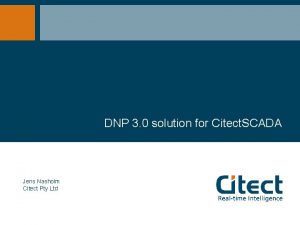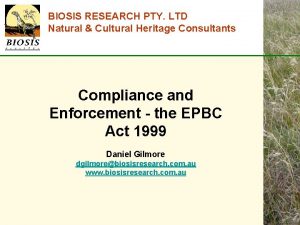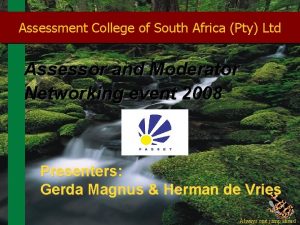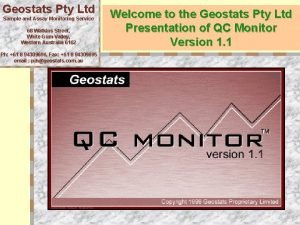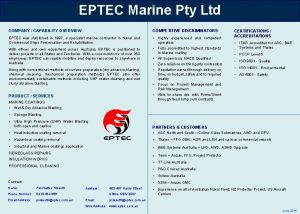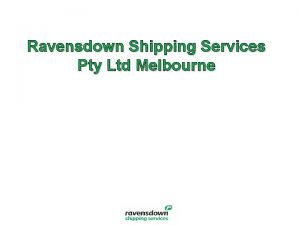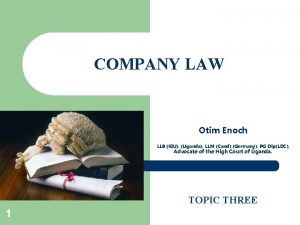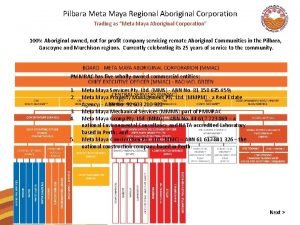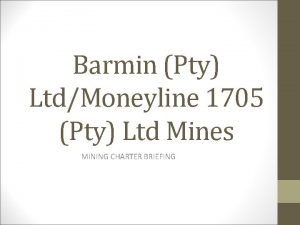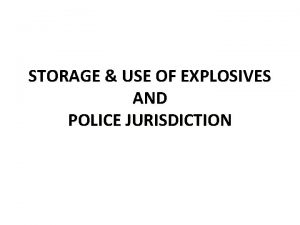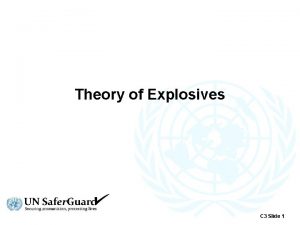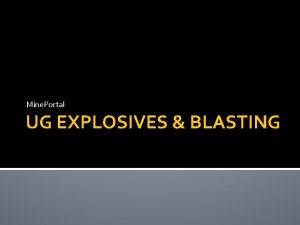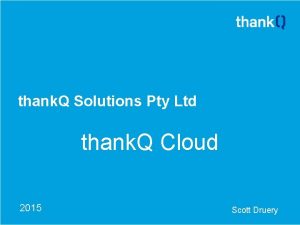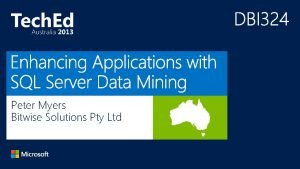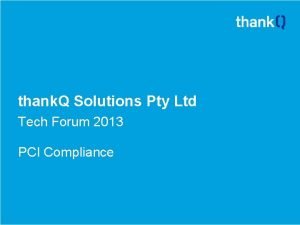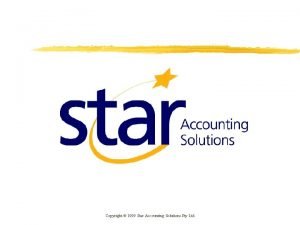Explosives Management Solutions EXMS Pty Ltd Reg No












- Slides: 12

Explosives Management Solutions EXMS Pty Ltd - Reg. No. 2016/480382/07 ASPASA GAUTENG REGIONAL MEETING (Update on Explosives) 9 th July 2019 © - EXMS (PTY) LTD

Contents: 1. Introduction 2. Explosives Audits by ASPASA: a. MHSA & EA (Sephaku) 3. Specific Challenges with MHSA New Explosives Regulations, 2018: a. All Shot Holes to be Stemmed & Tamped & SANS 120 b. Blasting in Close Proximity (No blasting within 500 meters) 4. Questions? © - EXMS (PTY) LTD Explosives Management Solutions EXMS Pty Ltd - Reg. No. 2016/480382/07

1. Introduction: Aspasa, has extended its strategic service to members with the introduction of a new Blasting Audits due to the mining industry facing numerous practical-legal challenges since the Mine Health and Safety Act’s (MHSA) new explosives regulations came into effect on 14 December 2018. There have also been various demands made by affected communities and Department of Mineral Resources (DMR) officials. While the Audit’s objective is primarily to prevent explosives-related incidents, accidents and legal stoppages, it does employ a more comprehensive examination. Basically, it covers operational-legal compliance to the Explosives Act and to MHSA explosives regulations, as well as regulations relevant to: • Licenses, permits and approvals, among others • Operational implemented systems, measures, procedures and risk assessments • Physical inspection of explosives facilities and blasting processes Moreover, mining operations will receive advice and assistance regarding various explosives-related challenges such as legal stoppages, complaints from the public related to blasting (whether caused by vibrations, noise, dust or debris), independent investigations into explosives related accidents or incidents, and even applications to the DMR. In short, the aim is to provide all Aspasa members with a highly relevant service at an affordable cost. The service includes the formal audit submitted to the mining operation, detailed feedback on all areas of non-compliance, and recommendations to ensure compliance. © - EXMS (PTY) LTD Explosives Management Solutions EXMS Pty Ltd - Reg. No. 2016/480382/07

2. Explosives Audits by ASPASA: © - EXMS (PTY) LTD Explosives Management Solutions EXMS Pty Ltd - Reg. No. 2016/480382/07

3. Specific Challenges: All Shot Holes to be Stemmed & Tamped & SANS 120 MHSA, Explosives Regulations, 2018: Reg. 4. 6 (5) “The employer at any surface mine must take reasonable measures to ensure that: (c) the competent person referred to in regulation 4. 4(1)does not initiate any explosive charge unless the portion of the shot hole between the explosive charge and the collar of the shot hole is stemmed and tamped in accordance with the requirements of regulation 4. 14; ” Reg. 4. 14 “The employer at any mine must take reasonable measures to ensure that: (1) no explosives contained in a shot hole are initiated unless a portion of the shot hole between the explosive charge and the collar of the shot hole is stemmed and tamped by means of a material determined for that purpose by the employer in consultation with the explosives manufacturer or supplier and stemming manufacturer or supplier, to prevent persons from being exposed from thesignificant risks associated with • explosives detonating outside the shot hole, • blow outs, • fly rocks, and • harmful explosives gases escaping from the shot hole. (2) the length of stemming and tamping of a portion of a shot hole between the explosive charge and the collar of a shot hole is determined by means of a risk assessment conducted by the employer in consultation with the explosives manufacturer or supplier, stemming manufacturer or supplier and the competent person contemplated in regulation 14. 1 (8) (Rock Engineer) The risk assessment must consider at least the following: (a) coupling ratio of explosives; (b) energy released to protect in situ rock; (c) containment of fly rock and air blast; (d) blast design and type of explosives; (e) geology and type of rock; and (f) safety in dealing with misfired holes. (3) the material used for stemming and tamping complies with SANS 120: 2009, Edition 2 "Stemming for use in blasting" © - EXMS (PTY) LTD Explosives Management Solutions EXMS Pty Ltd - Reg. No. 2016/480382/07

3. Specific Challenges: All Shot Holes to be Stemmed & Tamped & SANS 120 Compliance testing is responsibility of the Stemming Supplier. SANS 120 Requirements: • Flame Resistance • Electrostatic build-up • Chemical Reactivity with Explosives (Certified by Explosives Manufacturers/Suppliers) • Toxicity • Environmental Impact • Labelling Additional Required by MCSA (Employers): • Impact on downstream process/plant, and • Waste classification of containers and packaging. Performance testing – to be done and agreed between Employer, Explosives Manufacturer or Supplier and Stemming Manufacturer or Supplier Open Pit Operations using in-situ material generated from the same operation (Aggregate or Drill Chippings) MUST comply with SANS 120. © - EXMS (PTY) LTD Explosives Management Solutions EXMS Pty Ltd - Reg. No. 2016/480382/07

3. Specific Challenges: “No blasting within 500 meters” MHSA, Explosives Regulations, 2018: Reg. 4. 16 “The employer must take reasonable measures to ensure that: (2) no blasting operations are carried out within a horizontal distance of 500 meters of any public building, public thoroughfare, railway line, power line, any place where people congregate or any other structure, which it may be necessary to protect in order to prevent any significant risk, unless: (a) a risk assessment has identified a lesser safe distance and any restrictions and conditions to be complied with; (b) a written application is submitted to the Principal Inspector of Mines accompanied by the following documents for approval(i) a sketch plan indicating the distance from the blasting area to the affected structures; (ii) the risk assessment; (iii) a proof of consultation with the owners of the affected structures; and (iv) restrictions and conditions. (c) a written approval has been granted by the Principal Inspector of Mines; and (d) any restrictions and conditions determined by the Principal Inspector of Mines are complied with. ” © - EXMS (PTY) LTD Explosives Management Solutions EXMS Pty Ltd - Reg. No. 2016/480382/07

3. Specific Challenges: “blasting-related hazards” Limiting and Measuring of “blasting-related hazards” is an interesting and complex field, which cannot be addressed within the time limit of this presentation. We therefore limit the discussion to a “high level overview“ relevant to Airblast and Ground Vibration. Although numerous regulations place the onus on the mine owner to ensure that the blasting operations do not cause damage to private property, there are no statutory limits for Airblast and/or Ground Vibration, laid down in South African law. The mine owner, in turn, relies on advice from experts such as engineers employed by the major suppliers of explosives or independent consultants. The South African Bureau of Standards (SABS) adopted the International Organization for Standardization (ISO) standard ISO 4866 (2 nd edition in 2010) which provides guidelines for the measurement of vibrations and evaluation of their effects on fixed structures, not safe limits of vibration for structures. The explosive manufacturers and suppliers in South Africa generally make recommendations based on the USBM RI 8507 limits tables: • Maximum PPVs at frequencies below 50 Hz are recommended for a variety of building types; • Maximum charge sizes (per delay) for a range of distances to ‘typical’ and ‘sensitive’ structures. • Compilation of vibration limits for civil and engineering structures such as power lines, roads, pipelines and conveyors. Where to measure? • Field Practice Guidelines for Blasting Seismographs, published by the International Society of Explosives Engineers (ISEE, 2015), is the industry standard for the correct monitoring of blast vibrations. Monitoring equipment: • Depending on the situation, all monitoring equipment must be calibrated at least annually, and • Operated by Trained persons. © - EXMS (PTY) LTD Explosives Management Solutions EXMS Pty Ltd - Reg. No. 2016/480382/07

How to Prevent or Limit blasting-related hazards? • To effectively prevent and/or address community complaints, demands and subsequent production losses, it is critical to determine the actual limits for a specific blasting operation, before designing a solution. • Although International acceptable Standards like the US Bureau of Mines (USBM) and The US Office of Surface Mining Reclamation and Enforcement (OSMRE) study publications are well known and applied in South Africa, it is important to acknowledge site specific factors. • To address these challenges, it is sometimes more important to understand address the reasons for the community complaints, rather than the possibility of actual blasting-related hazards. • More often than not, it may be necessary to distinguish between “Fear of actual Blast Damage” and “Blast Nuisance/Irritation” - Therefore the strategy to design at much lower limits than International acceptable limits. • The type and quality of structures are also important factors to determine actual acceptable limits, rather than International acceptable limits tables. © - EXMS (PTY) LTD Explosives Management Solutions EXMS Pty Ltd - Reg. No. 2016/480382/07

How to Prevent or Limit blasting-related hazards? Numerous strategies can be applied: • Accurate control of Mass explosives per delay. • Manage Ground Vibration and Airblast. • Understanding initiation point and timing. • Application of Electronic Blasting Systems. © - EXMS (PTY) LTD Explosives Management Solutions EXMS Pty Ltd - Reg. No. 2016/480382/07

With Acknowledgement & Thanks to: • Mr. Simon Tose AEL Global Mining Optimisation Manager • Research agency: CSIR, Project number: SIM 14 09 01, 31/03/2016 & Mine Health and Safety Council (MHSC): “Development of a South African Minimum Standard on Ground Vibration, Noise, Air-blast and Flyrock near Surface Structures to be Protected. ” Milestone Report. R. J. Durrheim, A. Milev, T. Kgarume, F. Brovko, B. Wekesa, T. Lumbwe and N. Singh © - EXMS (PTY) LTD Explosives Management Solutions EXMS Pty Ltd - Reg. No. 2016/480382/07

Explosives Management Solutions EXMS Pty Ltd - Reg. No. 2016/480382/07 Thank You © - EXMS (PTY) LTD +27 83 456 3018 corrie@exms. net. za Corrie Rautenbach
 Portaü
Portaü Ibm global financing south africa pty ltd 90 grayston drive
Ibm global financing south africa pty ltd 90 grayston drive Citect scada latest version
Citect scada latest version Biosis pty ltd
Biosis pty ltd Assessment college of sa (pty) ltd
Assessment college of sa (pty) ltd Geostats pty ltd
Geostats pty ltd Eptec pty ltd
Eptec pty ltd Ravensdown shipping services pty ltd
Ravensdown shipping services pty ltd Nec australia pty ltd
Nec australia pty ltd Environex international
Environex international Interpro australia pty ltd
Interpro australia pty ltd Re noel tedman holdings pty ltd
Re noel tedman holdings pty ltd Pilbara meta maya
Pilbara meta maya


